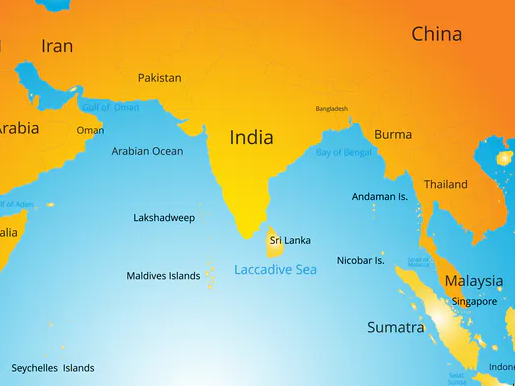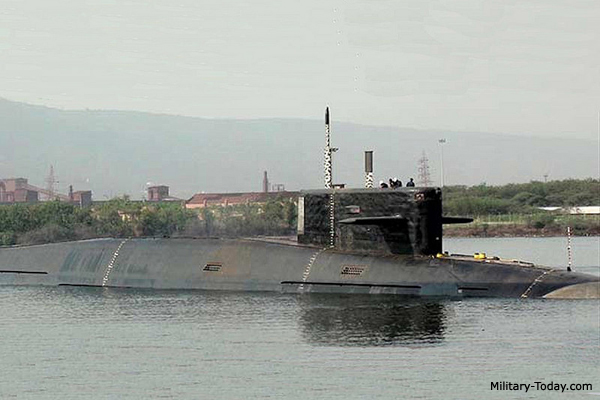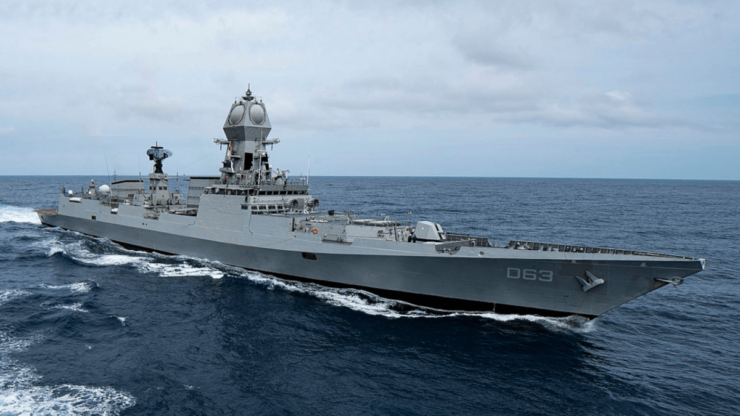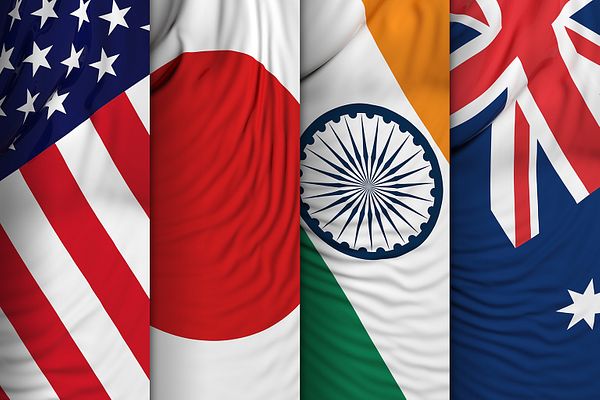History is testimony to the fact that any Ruler who went on to become an Emperor always had a strong Navy. The ones that conquered the Blue Waters conquered the world. India was a superpower in ancient times. The Chola kingdom’s Navy was considered one of the strongest navies of its time and one of the major reasons behind the Cholas’ economic supremacy. Supremacy of the Navy stands true even in the 21st Century. If India has to become a superpower again in the 21st Century, it will have to build a Blue Water Navy capable of dominating the Indo-Pacific Region.
India’s Geostrategic Location
The Indo-Pacific is increasingly becoming a geostrategic focal point on the globe. The Indian Ocean Region (IOR) holds great relevance in the emerging world order of the 21st Century, in terms of economic growth, natural resources, as well as major sea lines of communication. Being geographically and economically central to the IOR, any geo-economic contestations will have a huge impact on India. While China is aiming to secure access to strategic ports to gain an economic and strategic advantage, India’s role in the region is increasingly seen as a protector of the international order, particularly as it pertains to maintaining open sea lanes and the freedom of navigation.

Pivotal Role of Indian Navy
India needs a modern Navy to protect its maritime interests and shoulder additional responsibilities, particularly in the current geo-political and security situation that prevails in the Indo-Pacific Ocean Region. The aim of the expansion plan of the Indian Navy is to govern the two oceans, the Indian Ocean as well as the Pacific.
Navies are not built in a day, they require consistent efforts and thus, the Indian Navy now needs to transform from a ‘Buyer’s navy into a Builders Navy’. One of the major challenges for Indian forces, of course, remains the budgetary support. The reasons for this build-up are several and could be summarised as under:
- First, national prestige has become an important lever for the Indian Navy. The need to have a powerful, three-dimensional, and a long-range Navy to reflect a Great Power status.
- Second, the ability of the indigenous shipbuilding industry to not only provide more but also “push” for more (orders).
- Third, to have a credible “second strike” nuclear deterrent as a naval retaliatory action is considered the least vulnerable and most effective.
- An Indian ambition to establish a strong presence in the IOR amidst the changing geopolitical maritime environment has led to a wish list of procurements by the Indian Navy.
Growth Of Indian Navy
The Navy is striving to address the capability voids in areas such as aircraft carriers, tankers, landing platform docks, mine countermeasures vessels, submarines and integral helicopters. We are also enhancing our surveillance capabilities through induction of long-range maritime reconnaissance aircraft, integral helicopters and high-altitude long-endurance aircraft or remotely piloted aircraft. The focus has been to augment capability through induction of modern platforms, weapons and sensors. India also needs to enhance its ability to conduct surveillance and maximise its maritime domain awareness.

Some baby steps have been taken by the Indian Navy towards Blue Waters, however, the national focus on Blue Waters has to go beyond rhetoric and start action on ground. As part of modernisation, induction of maritime missile technology further enhances the Indian Navy’s potency. The 300-km BrahMos medium range cruise missile and the 350-km Dhanush (Prithvi II adapted) ballistic missile are noteworthy additions to India’s armoury. The Dhanush ballistic missile is capable of being launched from both ‘on water’ as well as ‘under water’ assets. Also, equally important, is the successful testing and impending induction of the 1,500-km range Sagarika ‘Oceanic’ missile on the INS Arihant. Add to this India’s successful testing of the 3,500-km range Agni III ballistic missile (with work underway for a submarine launched version) and it puts both Pakistan and China even more firmly within India’s nuclear sites.
Recently, India has quietly commissioned its secretive nuclear missile tracking vessel called the VC 11184, entering a select league of nations with the capability to monitor missile launches at long distances, thereby enhancing the testing programme and adding a crucial element to a national missile defence system. The underwater capabilities of India need greater focus as the submarine fleet is ageing (1980s vintage). The acquisition of a third Russian Akula class nuclear powered attack submarine will enhance the underwater capability to some extent.
India spends just about 15 percent of its total military expenditure on its Navy, far lower than its peers in the QUAD. The US leads the pack, spending nearly 30 percent of its military expenditure on its navy, while Australia and Japan spend nearly 25 percent and 23 percent, respectively.

Increasing Footprints in Blue Waters
Role of A&N Command: India positioned its first tri services command at Port Blair, Andaman & Nicobar Islands. The primary aim was to protect its strategic interests in the Straits of Malacca but the aim was also to place a command and communication structure at the islands, with reasonable logistics facilities. This could be augmented whenever needed. This tri services command will act as a fulcrum for Indian Navy operations and also friendly naval forces in the Indo-Pacific region. The need was well established during joint multinational exercises. Currently, India continues to use it as a logistical facility for supporting the navy’s deployments in East and Southeast Asia. The role can be suitably enhanced when the need arises.
Offshore Bases: India is increasing its footprints in the blue waters of the Indo-Pacific Ocean region. Strategically located islands in the Indian Ocean are crucial for domination of blue waters and safeguarding the country’s maritime natural resources. These islands also provide an opportunity for coordinated and joint anti-submarine warfare missions for both the Indian and the Pacific Oceans. India has negotiated agreements with several states in the littoral IOR to obtain military access to their bases. India has also engaged France and the US through logistics agreements, which grant India access to port facilities at the US base on Diego Garcia and the French base on Reunion Island.
An agreement has been reached with Australia to use the Coco Islands for joint naval surveillance of sea routes. The Coco Islands fall right in the middle of sea trade routes. The Indian government has set up listening posts and established naval surveillance facilities in Madagascar and Mauritius. The small, remote Mauritian island called Agalega is currently being developed as an air and naval staging point for surveillance of the South-West Indian Ocean. In recent years, India has sought to further develop its military access to the South-West Indian Ocean by building a logistics base on Seychelles’ remote Assumption Island. There is a similar arrangement with Japan, which provides India access to naval facilities at Djibouti.

Maritime Collaboration: India has also held multilateral naval exercises in the Andaman and Nicobar Islands with 16 other countries and in the Rim of the Pacific Exercise (RIMPAC), sailing alongside the Australian, Japanese, and US naval forces. Maritime collaboration and multilateral naval exercises with QUAD member countries conveyed the right signals to the world about emerging alliances, in the new world order.
Way Ahead
India is set to be a significant player in the global maritime pecking order for the 21st century, with a substantive ‘blue water’ navy ready for operating in various long range deep water settings. As per the Maritime Capability Perspective Plan, the Indian Navy aims to have 200 ships, 500 aircraft and 24 attack submarines. At present, the Navy has around 132 ships, 220 aircraft and 15 submarines. We also require at least three aircraft carriers. The Navy has been requesting for additional funds since long to become battle-ready for blue waters. The focus should be rapid capability expansion that is anchored in indigenous construction, self-reliance, public and private sector participation, and it’s called ‘nation building through shipbuilding’. However, apart from counting numbers, focus should be on quality and capability enhancement.
Conclusion
The Indian Navy, which is the flag bearer of India’s maritime power, needs to transform itself to become capable of governing two oceans, the Indian Ocean as well the Pacific. India is now cautious that it cannot allow China to dominate the IOR like it has done in the South China Sea and challenge territorial claims and international norms in the IOR.
After a neglect of almost half a century, a strong strategic maritime build-up has been evident since the beginning of the 21st Century. India entered the 21st century with a small but formidable regional naval posture. The Government of India took strong policy decisions to increase funding for warship construction in order to build ‘blue water’ capability for the Indian Navy. This was facilitated by India’s strong economic performance in the last two decades.
The Indian Navy is the key instrument of power for India as an emerging Superpower. A strong and professional Blue Water Navy can contribute to power projection, within the Indo-Pacific Region and the world. The Indian Navy with its current professionalism and future plans has the potential to enhance India’s image as a superpower in the future. The Indian Navy has created a niche for itself by exhibiting its professionalism and contributions towards nation building. The grateful nation acknowledges it with standing applause and salutes the Sea Warriors on Indian Navy Day on December 4.
-The writer is a veteran of Indian Army. Views expressed are personal and do not necessarily reflect the views of Raksha Anirveda. He can be contacted at www.majgencpsingh.com








